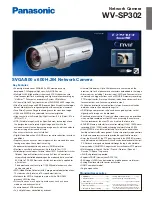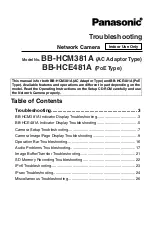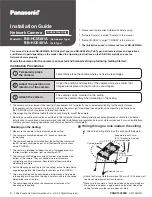
Sometimes Bigger is Better. Image Sensors are a Case in Point.
Film or digital: big photoreceptors
mean high image quality
The bigger the film size, the better
the image quality. That's common
knowledge in the world of film
cameras. Ever tried using a Brownie
film camera to shoot high-quality
photos? Then you'll have a vivid
sense of the exponential increase in
image quality as film size increases.
Basically, the same goes for digital
cameras. In other words, sensor
performance being equal,
the image quality of a digital camera
is determined by the size of
the image sensor, be it CCD or
CMOS. At 20.7 x 13.8mm, the DP1's
14-megapixel image sensor is SLR-
sized. This is about 12 times the
size of the 1- to 2.5-inch sensor, and
7 times the size of a 1- to 1.8-inch
sensor used in a conventional
digital compact. This generous size
takes the DP1's image quality to
a different dimension.
A high pixel count doesn't always
mean high image quality
Even among ordinary compact
digital cameras, pixel-counts have
increased rapidly of late. However,
there may be more pixels, but the
sensor is still the same size. This
means that the pixel pitch, or the
gap between each pixel, is reduced
to about 2 micron. Decreasing the
pixel pitch also decreases the size
of the light-capturing photodiodes,
so more light is lost in the capture
process. This loss of light leads to
a poorer signal-to-noise (S/N)
ratio, a narrower dynamic range,
and a deterioration in the actual
image signal. And that's why a high
pixel count doesn't always mean
high image quality. The pixel pitch
in the DP1's image sensor, however,
is a generous 7.8 micron.
The large photodiodes capture
the light coming through the lens
without losing any of it. This image
sensor is one of the secrets behind
the DP1's high resolution and
richly-nuanced images.
Full-sized sensor delivers
a shallower depth of field
The small size of the image sensor
used in a conventional compact
digital camera explains why it
captures rather flat, unmodulated
images. If the image sensor is small,
the focal distance of the lens is short.
If the focal distance of the lens is
shorter, the depth of field — meaning
the span of distances over which
the lens can focus — also increases.
The prosaic quality of the images
captured by an ordinary compact
digital camera is caused by the depth
of field characteristic of a small
image sensor: the lens focuses evenly
on everything between the subject
and the background, eliminating
any cadence within the image.
The DP1 uses a wide-angle lens with
a focal depth equivalent to 28mm on
a 35mm film camera. But because of
its large image-sensor, the depth of
field is shallow. So, when shooting
at close range or even with a wide-
SIGMA DP1's Direct Image Sensor
Conventional
Compact
Digital Camera's
Image Sensor
The DP1 has an integral 14 megapixel,
SLR-sized (20.7 x 13.8mm) image
sensor. This is about 12 times the size
of the 1- to 2.5-inch sensor, and seven
times the size of a 1- to 1.8-inch sensor
used in a conventional compact
digital camera. This generous size
takes the DP1’s image quality to
a different dimension. What’s more,
the pixel pitch of the image sensor
is a generous 7.8 micron. An ordinary
compact digital camera delivers
“high quality” with a high pixel count
achieved simply by dividing up the
sensor into smaller sections. In the
DP1, however, the large photodiodes
deployed at a large pixel pitch
capture pure, rich light efficiently, so
the image signal is superb right from
the start. This gives the DP1 its high
resolution and richly-graduated tones.
Image Sensor Size Comparison
open aperture, you can use the kind
of natural out-of-focus effects you'd
expect of an SLR.
A camera born of Sigma's purist
camera philosophy and universal
camera priorities. The world's first
high-performance compact digital
camera with an integral full-sized
image-sensor. That would be the DP1.
10










































